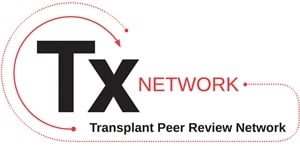Journal list menu
Export Citations
Download PDFs
Cover Image
American Journal of Transplantation: Volume 14, Number 5, May 2014
- First Published: 20 April 2014
On the cover this month: Hepatitis C virus (HCV) remains one of the most common indications for liver transplantation and a significant problem for much of the chronic dialysis population. Importantly, although liver transplantation is an effective remedy for HCV-related liver failure, posttransplant HCV recurrence remains a near certainty. However, many new antiviral agents are emerging with legitimate promise to not only control HCV, but eliminate it. Gane and Agarwal (page 994) provide an update on the drugs that may potentially dethrone HCV as a top indication for transplantation. Also in this issue, Stock et al (page 1136) make novel observations regarding an association between sirolimus exposure and a lower frequency of CD4 lymphocytes containing HIV DNA, suggesting that immunosuppression required for kidney transplantation in the HIVinfected recipient may impact the level of HIV persistence. Cover design by Ken North, North Design Group.
The AJT Report
The AJT Report
- Pages: 985-986
- First Published: 17 April 2014
Patients with heart failure are increasingly being implanted with mechanical circulatory support devices. “The AJT Report” takes a look at the history—and future—of their use, and how the heart allocation system may need to change to differentiate among the sickest patients. Also this month, we review results of a new study that concludes that smokers' lungs may be sufficiently suitable for transplant.
Literature Watch
Literature Watch Implications for transplantation
- Page: 987
- First Published: 17 April 2014
A recent publication identified a previously unappreciated form of PTEN, a tumor suppressor that is mutated in multiple cancers, with some surprising properties that suggest this protein can be transferred from one cell to another. The results offer the possibility of designing specific peptide-based drugs to target cells for immunosuppression or tolerance induction.
Editorials
The Secret Behind Non-Antigen-Pulsed Autologous Dendritic Cell Therapy in Transplantation
- Pages: 989-990
- First Published: 14 April 2014
This editorial discusses the development of regulatory dendritic cell therapies in transplantation during the past two decades, and highlights the study by Segovia et al (page 1021) on the beneficial effect of administration of non-antigen-pulsed autologous dendritic cells in a mouse model of minor-mismatched skin transplantation.
Access to Retransplantation After Failed Donation After Circulatory Death Liver Transplantation: Eo Ire Itum
- Pages: 991-993
- First Published: 14 April 2014
Livers from donation after circulatory death offer additional access to life-saving transplant, but their effective use depends greatly on recipient disease burden and the geographic availability of livers from brain dead donors. See article by Allen et al on page 1120.
Minireview
Directly Acting Antivirals (DAAs) for the Treatment of Chronic Hepatitis C Virus Infection in Liver Transplant Patients: “A Flood of Opportunity”
- Pages: 994-1002
- First Published: 14 April 2014
This article reviews direct-acting antiviral agents that improve the safety and efficacy of hepatitis C virus treatment before and after liver transplantation.
Special Article
Considerations for Screening Live Kidney Donors for Endemic Infections: A Viewpoint on the UNOS Policy
- Pages: 1003-1011
- First Published: 17 March 2014
In response to the requirement for live kidney donor screening for Chagas disease, strongyloidiasis, and West Nile virus by the Organ Procurement and Transplantation Network, the Transplant Infectious Diseases Community of Practice provides specific testing guidelines. (Also see case report by Le et al on page 1199.)
Meeting Report
The Cutting Edge of Skin Cancer in Transplant Recipients: Scientific Retreat of International Transplant Skin Cancer Collaborative and Skin Cancer in Organ Transplant Patients Europe
- Pages: 1012-1015
- First Published: 10 March 2014
This report provides a summary of the advances in transplant-related dermatology research and clinical medicine presented at the international biennial scientific retreat of the Skin Cancer Collaborative.
Personal Viewpoint
Improving Outcomes in DCDD Liver Transplantation: There Can Only Be Strength in Numbers
- Pages: 1016-1020
- First Published: 08 April 2014
The authors contend that the current state of donation after circulatory determination of death liver transplantation will not advance without a focused initiative, and herein they present arguments to support this contention.
Original Articles
Basic Science
Autologous Dendritic Cells Prolong Allograft Survival Through Tmem176b-Dependent Antigen Cross-Presentation
- Pages: 1021-1031
- First Published: 14 April 2014
Using a mouse skin transplant model combining anti-CD3 treatment with autologous tolerogenic dendritic cell infusion, the authors demonstrate the importance of antigen cross-presentation to prolong allograft survival mediated by CD8+ regulatory T cells by characterizing a novel cation channel, Tmem176b, that participates in the fine-tuning of phagosomal pH in dendritic cells. See editorial by Morelli and Thomson on page 989.
In Vivo Environment Necessary to Support Transplanted Donor Mouse T Regulatory Cells
- Pages: 1032-1045
- First Published: 11 March 2014
This study demonstrates that immunomodulation is required to promote stable engraftment of infused donor Treg cells, and that this modulation creates peripheral space and minimizes initial competition with host Treg cells with sufficient presence of IL-2.
An Unanticipated Role for Survivin in Organ Transplant Damage
- Pages: 1046-1060
- First Published: 14 April 2014
This article discloses a novel role for survivin that regulates the tissue response against ischemia/reperfusion injury in kidney transplants and limits cellular anti-donor alloimmune responses.
Characterization of Transfusion-Elicited Acute Antibody-Mediated Rejection in a Rat Model of Kidney Transplantation
- Pages: 1061-1072
- First Published: 07 April 2014
In this study, the investigators demonstrate that M1 macrophages and TH1 cytokines play an important role in the pathogenesis of acute mixed rejection in rat kidney transplant recipients sensitized by donor-specific blood transfusion.
Cyclodextrin Curcumin Formulation Improves Outcome in a Preclinical Pig Model of Marginal Kidney Transplantation
- Pages: 1073-1083
- First Published: 11 March 2014
In a preclinical pig model of marginal kidney transplantation, graft quality and outcome are improved by supplementing University of Wisconsin solution with a cyclodextrin curcumin formulation.
Expression of Human CD46 Modulates Inflammation Associated With GalTKO Lung Xenograft Injury
- Pages: 1084-1095
- First Published: 02 April 2014
Xenogenic perfusion of lungs from transgenic <o1,3-galactosyltransferase-def icient pigs reveals that the additional expression of human membrane cofactor protein down-modulates the activation of the complement cascade, and diminishes platelet and coagulation cascade activation, neutrophil sequestration, and histamine release.
Angiopoietin-2 Inhibition Prevents Transplant Ischemia-Reperfusion Injury and Chronic Rejection in Rat Cardiac Allografts
- Pages: 1096-1108
- First Published: 07 April 2014
Donor heart-targeted or systemic recipient treatment with anti-angiopoietin-2 antibody prevents transplantation-related ischemia/reperfusion injury, microvascular dysfunction, and rejection development through endothelial stabilization in rat cardiac allografts.
IgG Response to Intracerebral Xenotransplantation: Specificity and Role in the Rejection of Porcine Neurons
- Pages: 1109-1119
- First Published: 10 March 2014
An active role of the host humoral response in the rejection of intracerebral neural xenografts is demonstrated by the presence of elicited antibodies directed against the donor neurons, and the prolonged survival of porcine neurons in the striatum of immunoglobulin-deficient rats.
Clinical Science
Survival of Recipients of Livers From Donation After Circulatory Death Who Are Relisted and Undergo Retransplant for Graft Failure
- Pages: 1120-1128
- First Published: 14 April 2014
This analysis of recipients of livers from donation after circulatory death donors who experienced graft failure and were selected to be relisted and undergo retransplant shows that mortality in these patients while waiting for and after undergoing retransplant was not higher compared with mortality in recipients of livers from brain dead donors. See editorial by Skaro et al on page 991.
Peginterferon and Ribavirin for Treatment of Recurrent Hepatitis C Disease in HCV–HIV Coinfected Liver Transplant Recipients
- Pages: 1129-1135
- First Published: 17 March 2014
The authors show that treatment of HCV-HIV coinfected transplant recipients with peginterferon and ribavirin yielded sustained virology responses in only 14% and with high rates of dose reductions (85%), early discontinuation (38%), and severe adverse events (85%).
Reduction of HIV Persistence Following Transplantation in HIV-Infected Kidney Transplant Recipients
- Pages: 1136-1141
- First Published: 03 April 2014
This study reports an association between sirolimus exposure and a lower frequency of CD4 lymphocytes containing HIV DNA, suggesting that immunosuppression required for kidney transplantation in the HIV-infected recipient may impact the level of HIV persistence.
Renal Transplantation Using Belatacept Without Maintenance Steroids or Calcineurin Inhibitors
- Pages: 1142-1151
- First Published: 31 March 2014
This study demonstrates that following alemtuzumab induction, a maintenance regimen of belatacept and sirolimus prevents rejection of live donor renal allografts and allows selected patients to be maintained rejection-free on belatacept monotherapy, eliminating the need for oral immunosuppressive therapy. (Also see brief communication by Leibler et al on page 1173.)
Evaluation of Molecular Profiles in Calcineurin Inhibitor Toxicity Post–Kidney Transplant: Input to Chronic Allograft Dysfunction
- Pages: 1152-1163
- First Published: 02 April 2014
A multiple-step approach using gene expression profiling of kidney allograft biopsies shows calcineurin inhibitor toxicity molecular signatures that associate with allograft injury (in a cross-sectional study), and contribution of the discovered calcineurin inhibitor toxicity signature in the progression to chronic allograft dysfunction with interstitial ibrosis and tubular atrophy (in a longitudinal study).
Molecular Classifiers for Acute Kidney Transplant Rejection in Peripheral Blood by Whole Genome Gene Expression Profiling
- Pages: 1164-1172
- First Published: 11 April 2014
This study of kidney transplantation describes a three-way classifier based on global gene expression profiling of peripheral blood and the blood signatures of patients with excellent functioning grafts that can be used in the setting of acute kidney transplant dysfunction to accurately distinguish between biopsy-proven acute rejection and acute dysfunction with no rejection.
Brief Communications
Kidney Transplant Recipients Treated With Belatacept Exhibit Increased Naïve and Transitional B Cells
- Pages: 1173-1182
- First Published: 14 April 2014
The authors report a B cell phenotype analysis in kidney transplant recipients who have stable renal function on belatacept maintenance immunosuppression, and show that belatacept influences the B cell compartment by favoring the occurrence of transitional B cells as described in operationally tolerant patients. (Also see article by Kirk et al on page 1142.)
BK Virus Encoded MicroRNAs Are Present in Blood of Renal Transplant Recipients With BK Viral Nephropathy
- Pages: 1183-1190
- First Published: 14 April 2014
The investigators examine for BK virus encoded microRNAs in the blood of renal transplant recipients and detect these microRNAs in patients with active BK virus nephropathy.
A Randomized, Double-Blind, Placebo-Controlled, Multicenter Study of Rabbit ATG in the Prophylaxis of Acute Rejection in Lung Transplantation
- Pages: 1191-1198
- First Published: 11 March 2014
This randomized placebo-controlled trial of induction therapy in lung transplantation demonstrates that a single early posttransplant dose of ATG-Fresenius does not reduce acute cellular rejection, graft loss, or death within the first year of lung transplantation.
Case Reports
Single Donor-Derived Strongyloidiasis in Three Solid Organ Transplant Recipients: Case Series and Review of the Literature
- Pages: 1199-1206
- First Published: 10 March 2014
This case series of suspected donor-derived strongyloidiasis highlights the epidemiology of Strongyloides stercorals and draws attention to the importance of diligent screening in all at-risk recipients and donors, as well as high index of suspicion and timely notification of possible donor-derived infections. (Also see special article by Levi et al on page 1003.)
Successful Treatment of Iatrogenic Multicentric Castleman's Disease Arising Due to Recrudescence of HHV-8 in a Liver Transplant Patient
- Pages: 1207-1213
- First Published: 26 March 2014
The authors report the development of iatrogenic Castleman's disease in an HIV-negative male 1 year post-liver transplantation who was treated successfully by reducing immunosuppression and administering rituximab.
Reports From the CDC: MMWR
Advisory Committee on Immunization Practices Recommended Immunization Schedule for Adults Aged 19 Years or Older — United States, 2014
- Pages: 1214-1216
- First Published: 17 April 2014
The 2014 adult immunization guideline changes are highlighted in these recommendations.
Images in Transplantation
CME
Skin Nodule on the Ear of a Kidney–Pancreas Transplant Recipient
- Pages: 1217-1219
- First Published: 17 April 2014
Letters to the Editor
Tacrolimus or Mycophenolate in Kidney Transplantation—Less, or More?
- Page: 1220
- First Published: 10 March 2014
The Optimal MMF Dose in Tacrolimus Treated Patients
- Page: 1221
- First Published: 17 March 2014
Perfect Is the Enemy of Good: The Iranian System of Paid Donation
- Pages: 1222-1223
- First Published: 11 March 2014
Is Proteinuria a Common Finding After Kidney Donation?
- Pages: 1224-1225
- First Published: 02 April 2014
Reply (Invited Response to 2 Letters re Iran Editorial)
- Page: 1226
- First Published: 07 April 2014




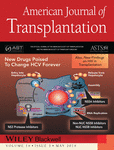
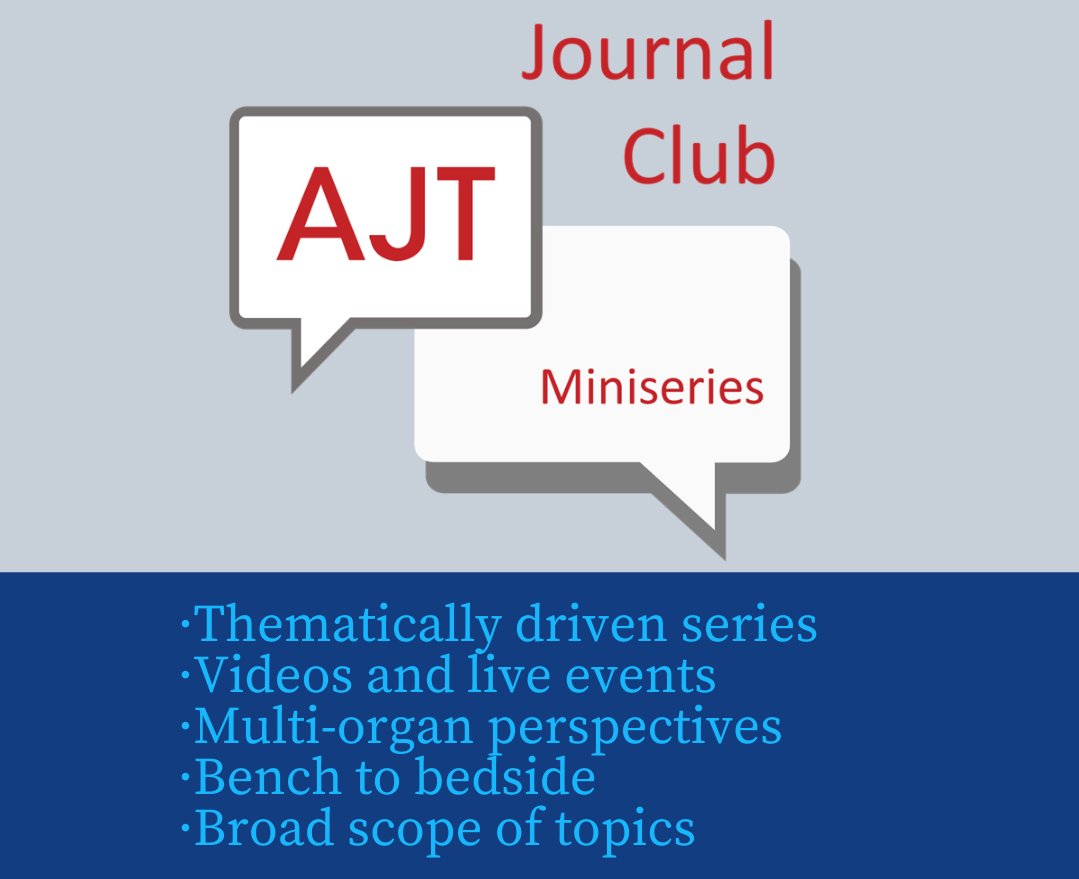


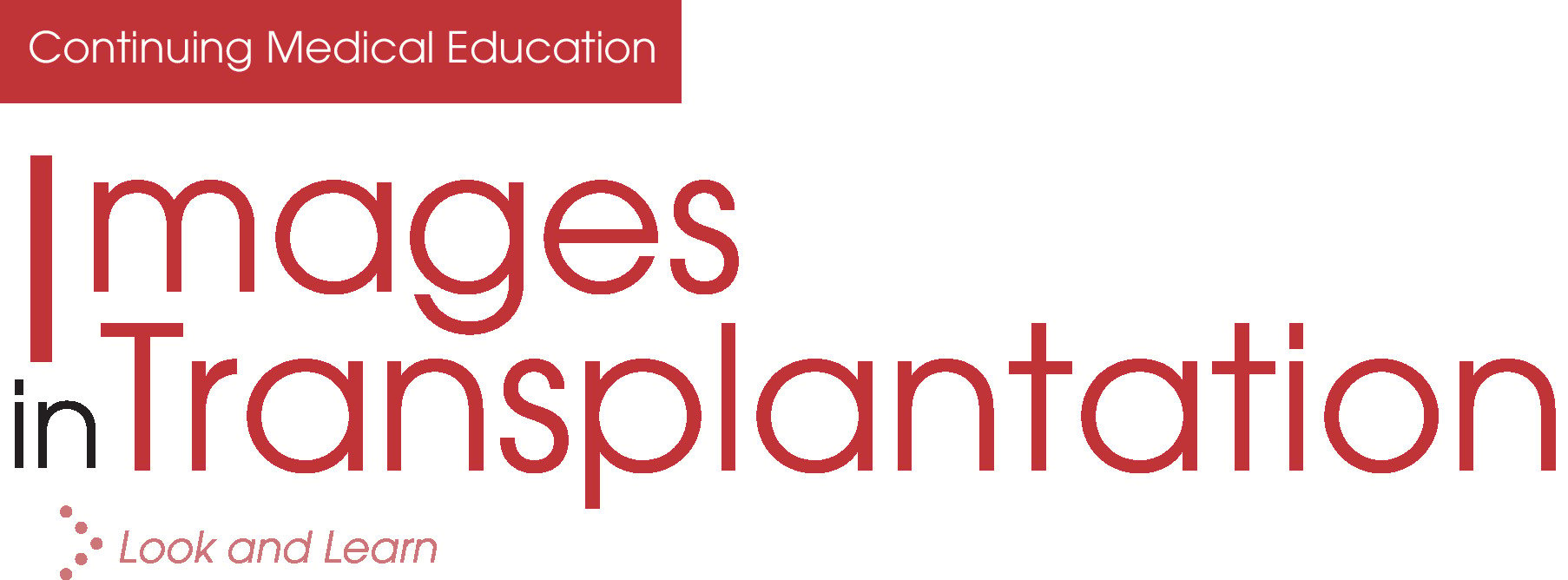
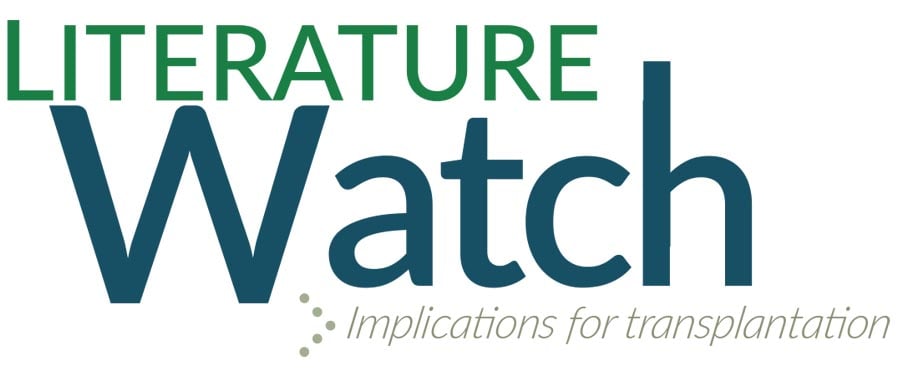
.jpg)
